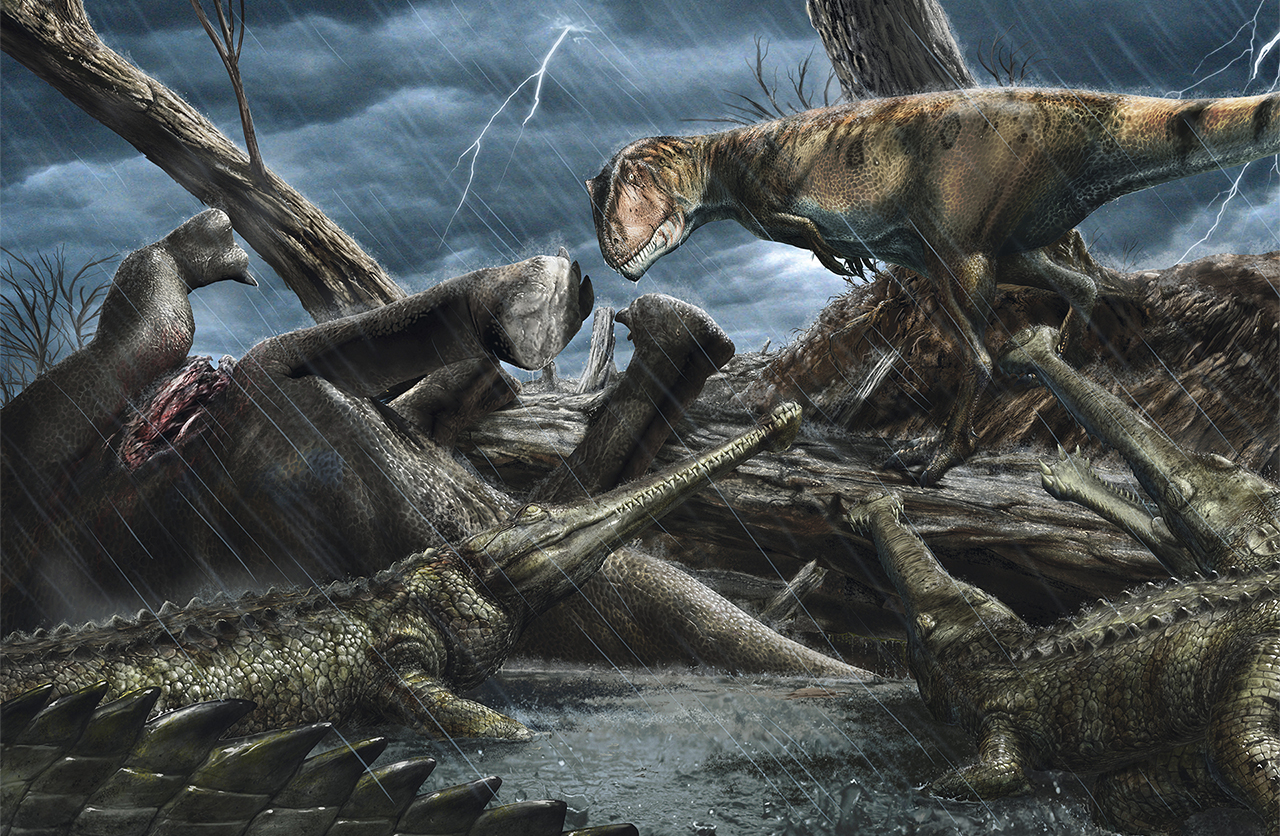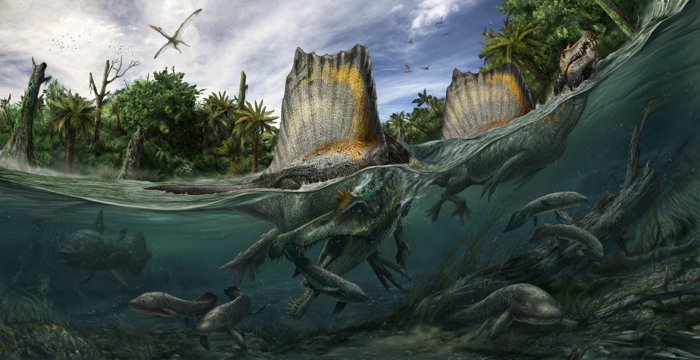
The Sahara Desert, which encompasses over 3.6 million square miles of Northern Africa, is one of the harshest and most inhospitable places on the planet today. However, new research conducted by a team of international paleontologists has found that millions of years ago, the area was a lush green oasis filled with a frightening line-up of ferocious carnivores, including flying reptiles, crocodile-like hunters, and aquatic dinosaurs.
"It was arguably the most dangerous place in the history of planet Earth because it was home to so many different kinds of predators in all shapes and sizes," says study leader Nizar Ibrahim, a paleontologist at the University of Detroit Mercy. "This river of giants is unlike any ecosystem today, and in fact, it's also pretty unique compared to other dinosaur age ecosystems."
The team's findings are based on the thousands of fossils recovered from two decades of paleontology expeditions to the Kem Kem beds. Located near the Moroccan–Algerian border on the northwestern edge of the Sahara Desert, the ancient rock formations are well-known for harboring vertebrate and non-vertebrate fossils from the Late Cretaceous period (100 million to 65 million years ago). However, this is the first comprehensive review of the area's ancient specimens in over a century.

The researchers examined remains of enormous pterosaurs, giant turtles, and ancient crocodyliforms. However, it was the fossils of three of the world's largest-known dinosaur species that elevated the Kem Kem beds to the status of "the most dangerous place in Earth's history."
They included the Carcharodontosaurus or "shark-toothed dinosaurs." Larger than even the T-Rex, the massive theropods measured 13 feet (4 meters) tall, 45 feet (13.7 meters) long, and weighed as much as 17,637 pounds (8,000 kilograms). The imposing creatures sported enormous jaws and serrated teeth up to eight inches long. Also found were remains of the Deltadromeus or "delta runner." The mid-sized theropod, which grew to about 26 feet (8 meters) in length, had unusually slender hind limbs for its size, suggesting it may have been a swift runner.
The most intriguing was the Spinosaurus aegyptiacus, or Egyptian spine lizard. The massive 50-foot (15 meters) long, 15,434-pound (7,000 kilogram) carnivore had an elongated snout, similar to those of a crocodile's maw, and long, conical teeth. The dinosaur's most unusual feature, however, was its tail. Unlike the stiff and tapering tails of other carnivorous dinosaurs, such as the T. Rex, it was flexible with a large surface area, thanks to a series of distinct tall, neural spines.

To test the tail's capabilities, the paleontologists created a plastic replica and attached it to a robotic swimming device. They found that the paddle-like structure was capable of moving sideways, suggesting that the dinosaurs could easily propel through water. The researchers believe the dinosaurs were equally comfortable on land, where they came to lay their eggs. The scientists speculate that the beasts walked on all four legs, instead of two like other meat-eating dinosaurs.
"But it had so many adaptations to an aquatic existence — nostrils high on the skull and further back from the tip, flat bottomed-toe bones and claws, dense and thickened bone for buoyancy control, and this newly discovered tail form — that it would have been at least as aquatic as Nile Crocodiles," says University of Portsmouth paleontologist and study coauthor David Martill.
The paleontologists, who published their study in the journal ZooKeys on April 21, 2020, believe their research on the Spinosaurus aegyptiacus provides new insights into dinosaur evolution. "This discovery overturns decades-old ideas that non-bird dinosaurs were restricted to terrestrial environments," said study coauthor Stephanie Pierce, a Harvard University vertebrate paleontologist and biomechanist. "So, yes, we believe that this discovery does indeed revolutionize our understanding of dinosaur biology."
Resources: udmercy.edu, www.ibtimes.com, yahoo.com
